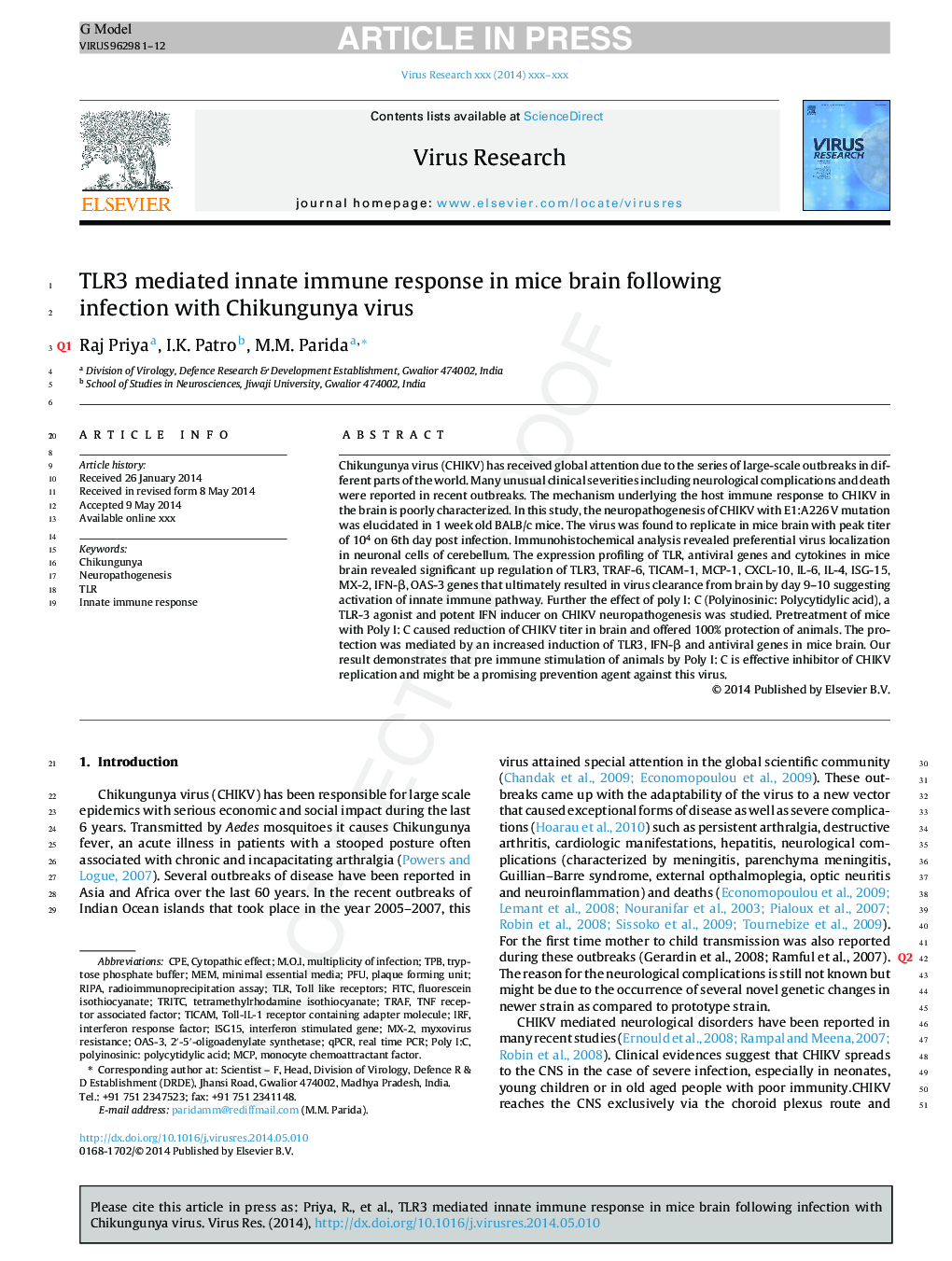| Article ID | Journal | Published Year | Pages | File Type |
|---|---|---|---|---|
| 6142507 | Virus Research | 2014 | 12 Pages |
Abstract
Chikungunya virus (CHIKV) has received global attention due to the series of large-scale outbreaks in different parts of the world. Many unusual clinical severities including neurological complications and death were reported in recent outbreaks. The mechanism underlying the host immune response to CHIKV in the brain is poorly characterized. In this study, the neuropathogenesis of CHIKV with E1:A226 V mutation was elucidated in 1 week old BALB/c mice. The virus was found to replicate in mice brain with peak titer of 104 on 6th day post infection. Immunohistochemical analysis revealed preferential virus localization in neuronal cells of cerebellum. The expression profiling of TLR, antiviral genes and cytokines in mice brain revealed significant up regulation of TLR3, TRAF-6, TICAM-1, MCP-1, CXCL-10, IL-6, IL-4, ISG-15, MX-2, IFN-β, OAS-3 genes that ultimately resulted in virus clearance from brain by day 9-10 suggesting activation of innate immune pathway. Further the effect of poly I: C (Polyinosinic: Polycytidylic acid), a TLR-3 agonist and potent IFN inducer on CHIKV neuropathogenesis was studied. Pretreatment of mice with Poly I: C caused reduction of CHIKV titer in brain and offered 100% protection of animals. The protection was mediated by an increased induction of TLR3, IFN-β and antiviral genes in mice brain. Our result demonstrates that pre immune stimulation of animals by Poly I: C is effective inhibitor of CHIKV replication and might be a promising prevention agent against this virus.
Keywords
MCP2′-5′-oligoadenylate synthetasem.o.iTRAFISG15IRFTRITCTLRRIPAqPCRFITCTPBCPEReal time PCRCytopathic effectinterferon stimulated genetetramethylrhodamine isothiocyanateminimal essential mediaradioimmunoprecipitation assayTNF receptor associated factorinterferon response factorfluorescein isothiocyanateMEMToll like receptorsNeuropathogenesisplaque forming unitInnate immune responsepfuPoly I:Cmultiplicity of infectionChikungunya
Related Topics
Life Sciences
Immunology and Microbiology
Virology
Authors
Raj Priya, I.K. Patro, M.M. Parida,
